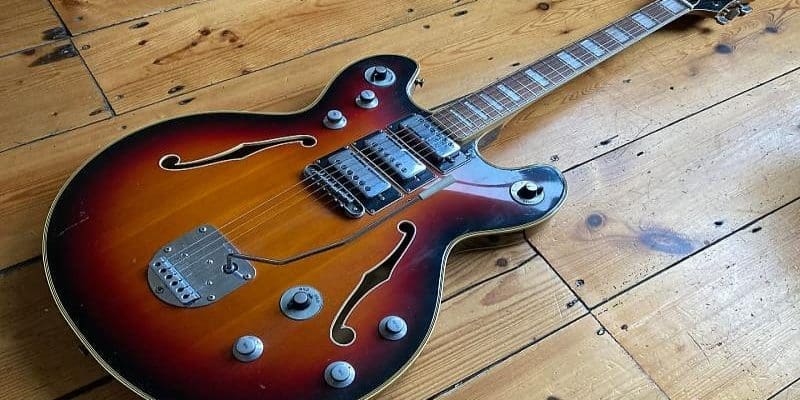
Strings of Harmony: The Intersection of Tamil Music and Guitars
Introduction
Tamil music, rich in its variety and historical roots, forms an integral part of the Tamil people’s identity, reflecting their deep-rooted traditions and cultural values. On the other hand, the guitar, a universally cherished musical instrument, represents the epitome of Western musical influence. The two might seem disparate at first glance, yet there’s a captivating intersection where Tamil music meets the guitar. It’s at this crossroads that fascinating innovations, cultural exchanges, and mutual enrichment occur.
Historical Interactions:
The British colonial period, which started in the early 17th century, brought Western music to the Indian subcontinent, including Tamil Nadu. During this time, several Western instruments, including the guitar, were introduced to the local population. The guitar, initially regarded as a Western novelty, began to be incorporated into Tamil Christian church services, where it was used to accompany hymn singing.
The Guitar in Tamil Cinema:
Tamil cinema, also known as Kollywood, has been a significant cultural force, shaping the musical tastes of the Tamil-speaking population. Beginning in the mid-20th century, composers such as M.S. Viswanathan began to use Western instruments, including the guitar, in film soundtracks. However, it was maestros like Ilayaraja and A.R. Rahman who truly integrated the guitar into Tamil film music.
Ilayaraja, renowned for his deep understanding of Western classical music and Tamil folk music, blended the guitar with traditional instruments to create unforgettable melodies. His use of the guitar in songs like “Ilamai Enum Poongaatru” from the movie “Pagalil Oru Iravu” stands as a testament to his innovation.
A.R. Rahman, a protege of Ilayaraja, further advanced the incorporation of the guitar in Tamil music. His experimental approach led to iconic compositions. One such example is “Pudhu Vellai Mazhai” from the film “Roja”, where he used flamenco-style guitar to accompany the Tamil lyrics, creating a unique East-West fusion.
Fusion Music and Independent Artists:
The rise of independent artists has further promoted the fusion of Tamil music and guitars. Prasanna, a pioneer in this realm, has developed a unique playing style, merging Carnatic music’s intricate gamakas with the electric guitar. His albums like “Be the Change” and “Electric Ganesha Land” showcase this innovative approach.
Independent artists like Sean Roldan, and bands like Oorka and Agam, have also been instrumental in this fusion journey. They have melded Tamil folk and Carnatic music with various genres like rock, jazz, and blues, with the guitar often taking center stage.
Tamil Rock Bands and the Guitar Culture:
Tamil rock bands have gained significant traction over the last few decades, and their impact has been substantial, particularly among the youth. These bands use the universal language of music to voice their perspectives on society, culture, and politics, and guitars have been crucial to their sound and message.
Key Bands and Their Influence
One of the trailblazers in this genre is the band ‘Junkyard Groove’. Formed in 2005, the band is known for its energetic performances and a unique sound that blends elements of alternative rock, funk, and blues. Their guitarist, Ameeth Thomas, has been instrumental in defining the band’s sound. Songs like ‘It’s Ok’ and ‘Beautiful Crime’ showcase the band’s innovative use of guitar and have become anthems among Tamil rock music enthusiasts.
‘The Casteless Collective’ has emerged as another force in the Tamil rock scene. Conceived by film director Pa. Ranjith and musician Tenma in 2017, the band is known for its hard-hitting social commentary and efforts to challenge caste-based discrimination. The band successfully blends gaana, a genre of Tamil folk music, with elements of rock, rap, and funk. Their electric guitarist, Yohan Chacko, contributes to the distinctive sound with his powerful guitar riffs and solos. Songs like ‘Magizhchi’ and ‘Quota’ effectively highlight the band’s unique musical blend and the central role the guitar plays in their arrangements.
An additional noteworthy Tamil rock band is ‘Oorka’. This band has made a name for itself by fusing traditional Tamil music with contemporary rock, creating a unique sound that has resonated with a broad audience. Guitarist Pradeep Kumar’s skill and creativity play a significant role in defining Oorka’s sound. Their popular songs, like ‘Urumeen’ and ‘Thee Thee’, showcase the seamless fusion of traditional and modern sounds, with the guitar serving as a vital connector.
Impact on Local Culture
The emergence of these and other Tamil rock bands has inspired a new generation of musicians and helped foster a thriving guitar culture. Learning guitar has become increasingly popular among Tamil youth, both as a form of self-expression and a way to connect with their cultural roots in a modern context. This trend has also led to a rise in local music schools and guitar shops, further testifying to the impact of these Tamil rock bands.
Conclusion
In conclusion, Tamil rock bands have not only brought about a cultural shift in musical preferences but have also used their platform to reflect societal issues and provoke thought. The role of the guitar in this movement has been pivotal, serving as a bridge between traditional Tamil sounds and modern musical styles. Through their music, these bands continue to inspire, challenge, and entertain, carving out a unique space in the global music scene.
